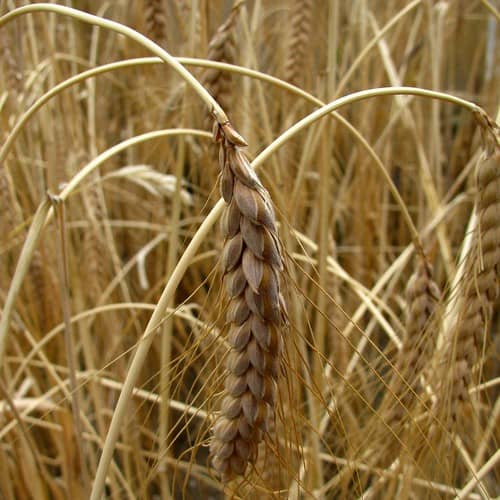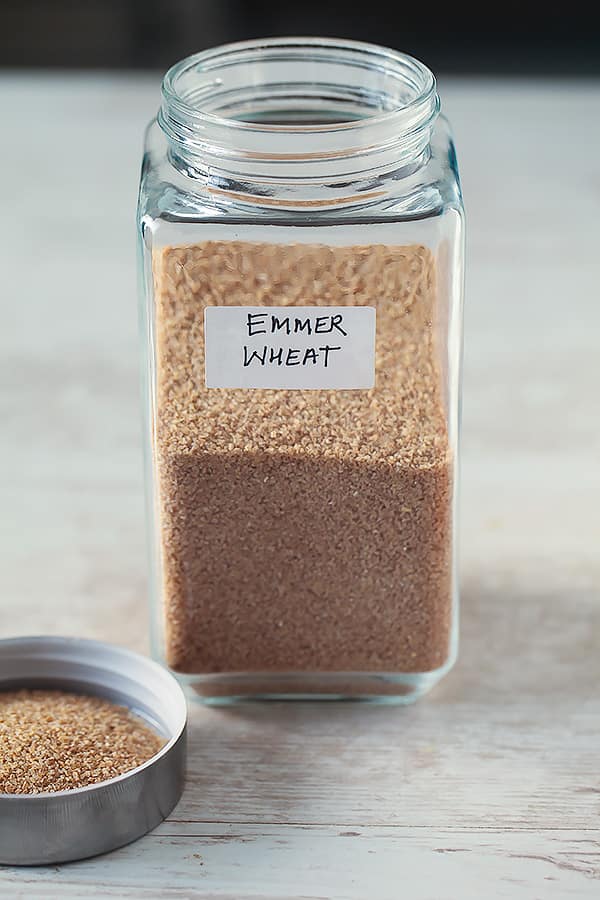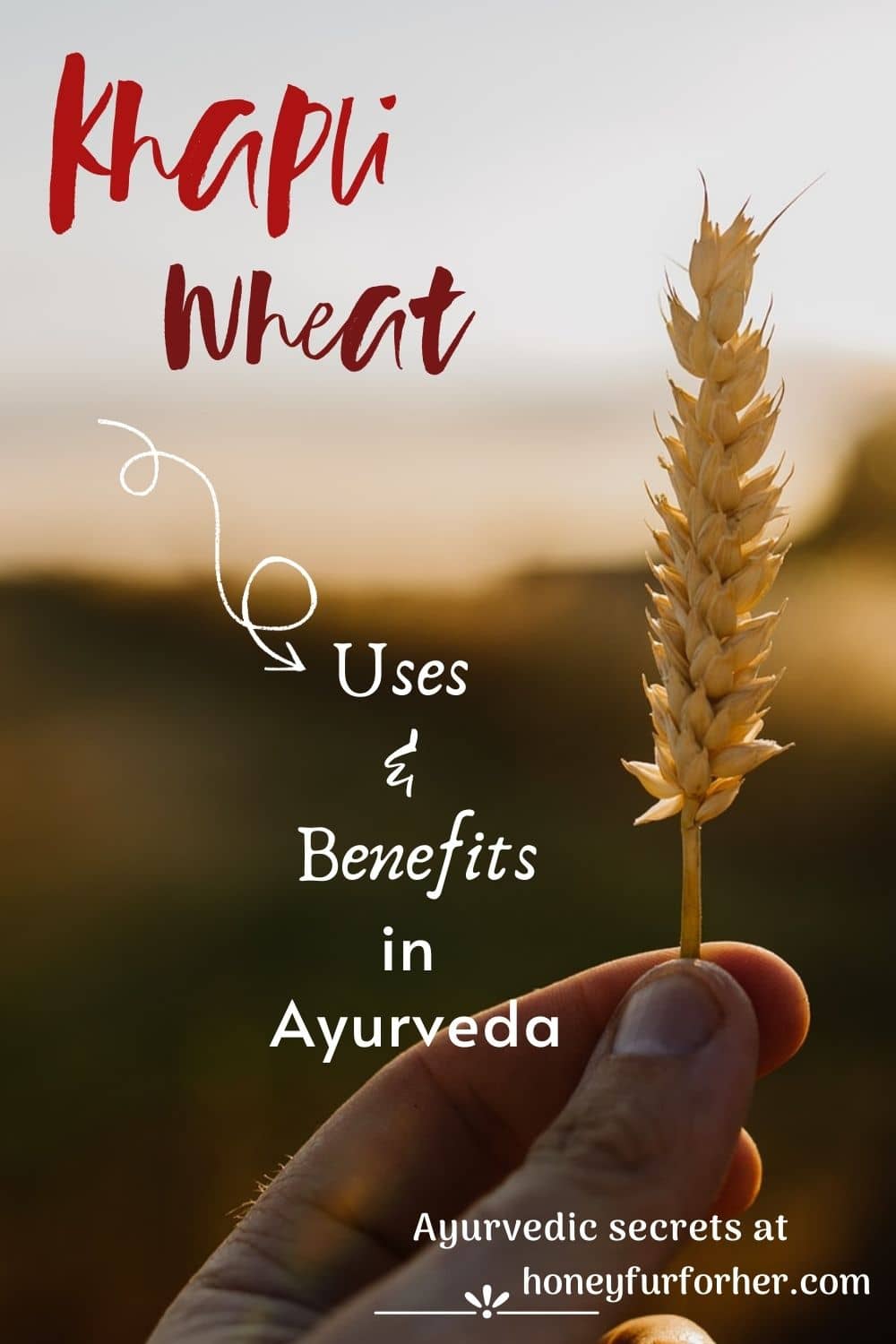Khapli Wheat, majorly a crop from the ancient world, is gaining popularity recently as Diabetic wheat. Western world also knows it as Emmer’s wheat. India is the biggest cultivator of Khapli wheat in the world due to its rich cultural roots. Khapli is mainly grown in hilly areas of Asia. In India, it is grown traditionally in rural areas of Karnataka and South India including Southern Maharashtra, parts of Tamil Nadu, Andhra Pradesh and coastal Gujarat.
The scientific name of Khapli is Triticum turgidum (subspecies –Dicoccum). It is known by different names in India e.g. Ravva in Andhra Pradesh, Samba in Karnataka, Khapli in Maharashtra, Godhumalu in Tamil Nadu and Popathia in Gujarat.
It is called Emmer’s wheat in Europe and Farro in Italy. It is said that Farro existed in times of Mesopotamia.

Interestingly, it is known to have been eaten by labourers who made Pyramids in Egypt around 3000BC. Also, it was grown in Indus Valley Civilization 5000-7000 BC.
It has also been grown in some parts of Germany, Russia, Spain, Switzerland and the USA but the use has largely been as the feed of the livestock.
Khapli Wheat Nutritional Facts – Constitution:
- Carbohydrate profile is 61 to 68 % of Starch and only 2-3% sugar.
- Has higher protein content than other wheat varieties, 30-39% or protein being albumin and globulin.
- About 3% or less part of the grain kernel is fat.
- High levels of Vit E found in wheat-germ of Khapli is helpful in anti-oxidants synthesis.
- Niacin and Thiamine, Vit B6 is present in healthy quantities.
- Also rich in Selenium, manganese, zinc and Iron.
- 47 grams of Khapli contains 170 Calories, 1 gram fat, 4 grams of fibre, 34 grams of carbohydrates and 6 grams of protein.
Properties:
- The grain of Khapli wheat is hard and vitreous (like glass in appearance).
- The flour is not whitish but dark-brownish in colour.
- Khapli has a subtle nutty flavour and chewy texture.
- It is soft, tasty and has high satiety value. Also, it doesn’t feel very heavy instantly after being eaten, unlike other grains.
- Khapli has a higher temperature tolerance when compared to other varieties of cultivated wheat.
- Khapli is a draught and stress-resistant crop. It has the ability to give good yields in poor soils. Plus it is fungus and disease resistant too. These qualities make it easy to cultivate crop with less care and attention. Thus it was one of the earliest domesticated grains.
- It is ‘Hulled’ wheat which means its grains are enclosed by hard strong husks and a semi-brittle rachis.
- Due to very low gluten content, the dough doesn’t rise very high while trying to make bread but still makes decent bread. It can be added to soups, stews, salads and granolas/ muesli.
- When it is soaked overnight and sprouted, it becomes even more tolerable for gluten-intolerant people.
- Gluten particles are minute and weak in Khapli flour and so it is suitable for gluten-intolerant (non-celiac gluten sensitivity and wheat allergy) people. However, individuals with celiac disease should avoid using it.
- Long Grain of Diccocum wheat (Khapli) is easy to cook, takes less cooking time and has more cooking heat-tolerance.
Good organic brands would go for traditional methods of sun-drying, winnowing to de-husk it and stone-grinding to yield the best benefits. In olden times, seeds were shaded, washed, sundried, de-husked and then ground by stone in an organic way. Drying in shade and sun-drying later helped to break down larger gluten particles. Milling in stone grinders (aka Atta Chakkis in India) kept the wheat-germ intact and retained the richness of its nutrient profile. But nowadays, most of the commercially available wheat are neither properly washed nor sun-dried. Plus they are later ground by machines/ Steel mills and not by traditional stone-mills. These are some of the reasons why people are developing more and more gluten-intolerance in recent times. Improper processing has degraded most consumed wheat’s quality over time.
In ancient times, Khapli wheat was frost-intolerant which later evolved to a more tolerant variety.
Actions Of Emmer’s Wheat:
- Anti-inflammatory: works to reduce pain, redness, and swelling (altogether called Inflammation).
- Antioxidant
- Anti-diabetic
- Cardio-protective
- Immuno-protective
Above actions make it useful in varied health conditions.

How To Use Khapli Atta (flour):
- Khapli rotis (Indian flatbreads) are tasty and easy-to-make options while trying to include it in daily diet.
- It goes well to make decent (but not very good rising) bread. Just replace or add a part of Khapli in normal flours in cake, cookies or bread recipes.
- It can be added to soups, salads and stews.
- Granola and muesli can be made from the grain of khapli/ Emmer’s wheat.
- For the vegetarians who are looking for a protein-rich plant-based diet, recipes which include legumes with Khapli/ Emmer’s wheat provide a very rich protein profile!
Contraindications: Celiac Disease
Khapli Wheat Flour Uses & Benefits:
Diabetes:
- Khapli grain has a low – glycaemic index (GI). This is very beneficial for Diabetes control. Low glycaemic index means it is slowly digested to release sugar in low levels and maintains energy levels for longer periods. Hence sharp ups and downs of sugar levels are controlled.
- Khapli has the ability to reduce fasting sugar levels.
- It is found to improve insulin sensitivity too.
Digestive System / Gluten Intolerance:
- Khapli is low in calories and rich in proteins and fibre which keeps you feel fuller for a longer time. This aids weight loss.
- It is rich in fibre content, is very easy to digest and increases energy levels. A single cup of Khapli wheat can provide 20% of the daily recommendation of dietary fibre.
- Khapli is not recommended for gluten-intolerant states though it has quiet low amounts of gluten in it. Even while trying in such cases, one needs to be careful and try in minimal amounts.
- It prevents metabolic disorders and gallstones formation due to its fibre-rich profile.
- It is also thought that the high content of Phytosterol in Khapli may help in the prevention of Colon Cancer but the studies are still going on.
- Fibre-rich profile of Khapli prevents constipation and hence may be beneficial to prevent colon cancer.
Respiratory System:
- It has helped in cases of childhood asthma.
- Reduces chronic inflammation in body organs.
Musculoskeletal System:
The magnesium content in Khapli helps strengthen bones, muscle and nerve system.
High Nutritional Value:
- It is rich in Vit B3, selenium, iron and magnesium.
- Also benefits pregnant women, post-pregnancy states and elderly by providing excellent nutritional profile.
Immunity:
- Khapli strengthens immunity due to the presence of complex carbohydrates and is recommended to the elderly and children.
- Zinc is essential for effective wound healing and a good immune system.
Good For The Heart:
- Beneficial in maintaining cardiovascular health.
- Khapli wheat lowers the bad cholesterol levels (LDL, triglycerides and total cholesterol levels) in bloodstream reducing chances of CVD (Cardio Vascular Disorders).
- Vit B3 (aka Niacin) present in Emmer’s wheat is good to control cholesterol levels.
Rich In Anti-Oxidants:
- It is rich in antioxidants like carotene and beta-carotene.
- The ‘bran’, which is the outer layer of the kernel, is rich in phytochemicals and antioxidants like lutein, phytic acid, lignans, flavonoids, Ferulic acid and saponins.
Women’s Health:
- It helps to improve women’s health.
- It is known to provide relief in post-menopausal symptoms.
- Prevents Breast cancer.
Side Effects:
- People with Celiac disease should take it with caution. If at all, they can start by taking it in minimal quantity to see how it suits them and gradually increase if found well-tolerated. This is so because all people show different levels of gluten intolerance and so some may tolerate the grain better than others. Always consult an expert before starting in individuals who are gluten- intolerant or suffer from Celiac disease.
- Also, some gluten-intolerant people who respond badly to modern grains may respond better to ancient grains like Emmer’s wheat.
- For normal individuals, it is well-tolerated without any side effects.
Price & Buying Availability:
The price varies from Rs. 70 per kg for the non-organic variety to a range of Rs 150 to Rs 300 per kg approximately for the organic variety.
- Siddhagiri’s Satvyk Organic Khapli Aata.
- Organics food market organic Emmer’s flour
- Our Organik Tree Emmer wholewheat flour
- Shivansh Khapli whole-wheat (non-ground)
Did you find this post useful? Would you like to get back to it later? Save THIS PIN below to your Pinterest Natural Living or Ayurveda board!

